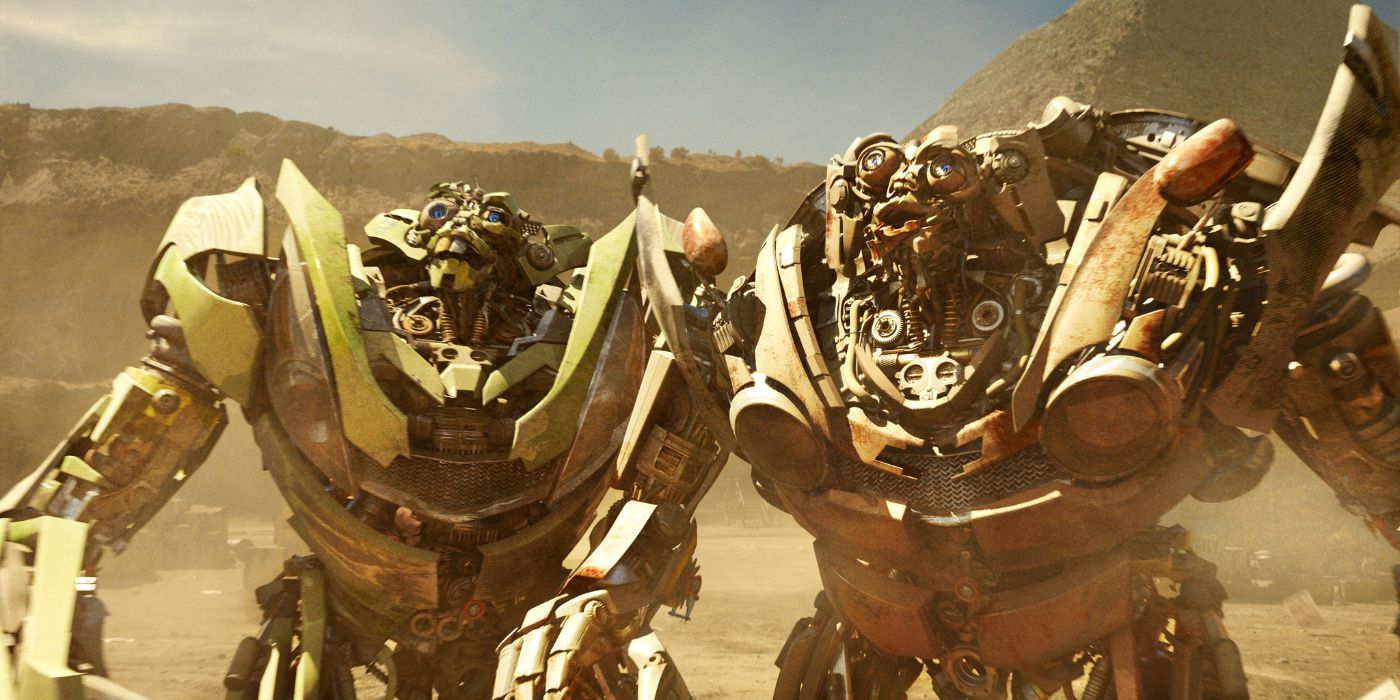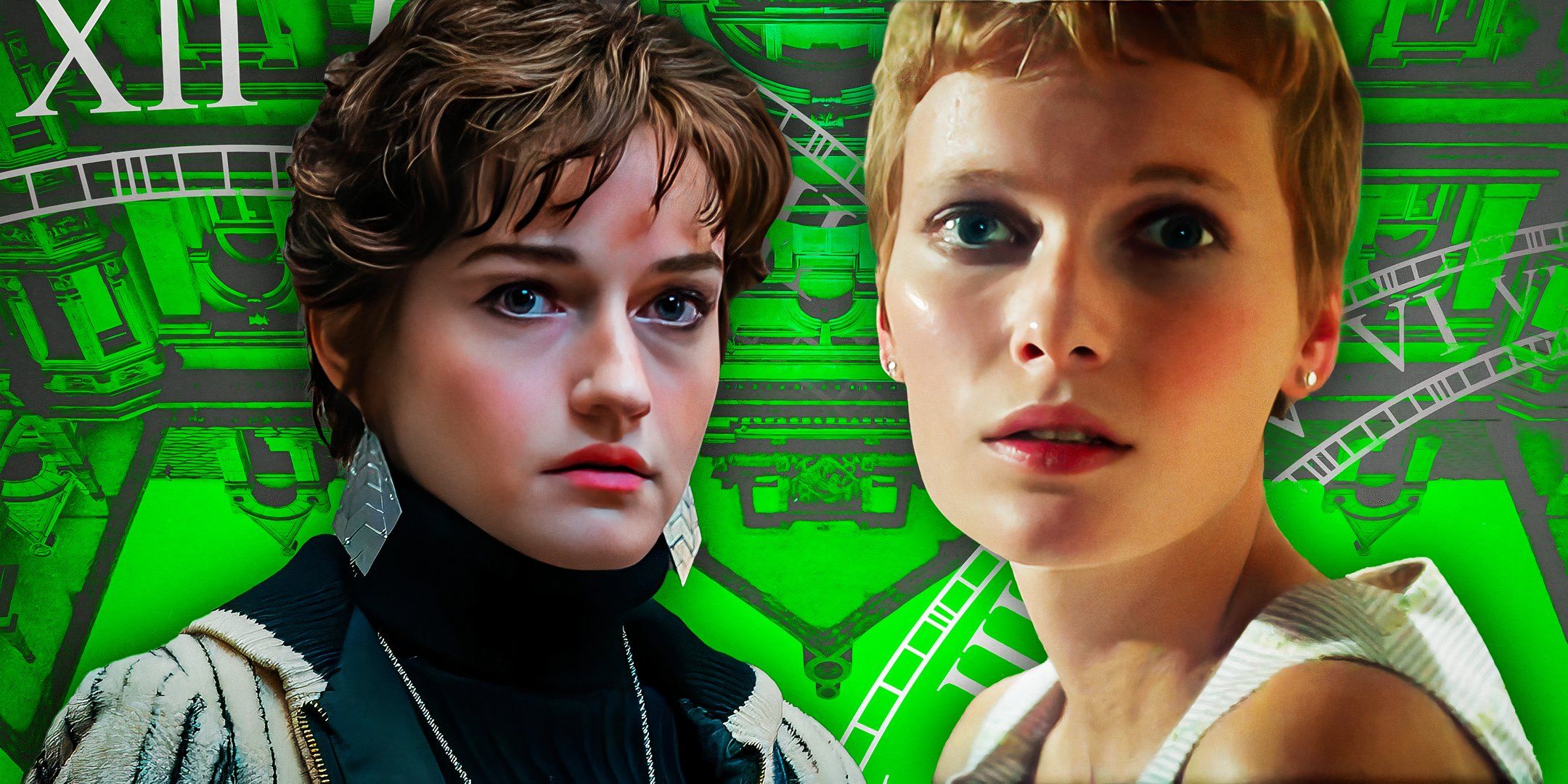‘Transformers One’ Proves That the Franchise Works Better Without Human Characters
The exceptional quality of the new CG-animated feature, Transformers One, proves what Transformers fans have already known for decades: the transforming robots are the best characters in these stories. The human characters are usually a distraction from what everyone wants to see, which is robots in disguise! But Transformers is about more than just a bunch of giant transforming robots shooting weapons and bashing each other in all types of metal-crunching mayhem. Starting with the classic 1980s animated series, The Transformers, the franchise has built a deep, strong mythology full of effervescent storytelling and characters.
Ever since their debut 40 years ago, the iconic Autobots and Decepticons have captured the imagination of fans across the globe, and Transformers One is no exception. With a storyline completely set on the Transformers’ home planet of Cybertron, Transformers One delivers a plot that solely focuses on the native Cybertronians without servicing annoying human characters and subplots that typically plague the live-action Transformers film franchise. It’s time to explore why Transformers One works better unencumbered by organic sentient beings!
The Human Characters Are a Detriment to the Transformers Films
Much of the live-action Transformers film franchise, specifically the first five installments directed by Michael Bay, is widely populated by wacky human characters and their inane, irreverent antics. Transformers, as a franchise, is by no means obligated to depict serious business one hundred percent of the time. However, the Bay movies frequently overstay their welcome with humans babbling incessantly awful dialogue, toilet humor, and unfunny slapstick gags. Case in point: The sequence in Transformers: Revenge of the Fallen where Judith Witwicky (Julie White), the mother of Sam Witicky (Shia LaBeouf), accidentally eats a stash of pot brownies and then proceeds to go on an embarrassing marijuana-fueled rampage across a college campus. The movie plays the scene for laughs, but it’s painfully unfunny, especially due to its incessant length. The Bay films are filled with awful humor such as this, and it continues in Transformers: Dark of the Moon with how it uses borderline incoherent characters such as Bruce Brazos (John Malkovich) and Jerry Wang (Ken Jeong).
Even when Bay switches up the cast for Transformers: Age of Extinction and Transformers: The Last Knight, the insanity of the human characters refuses to let up. Let’s not forget that Age of Extinction dedicates an entire scene explaining how 20-year-old Shane Dyson (Jack Reynor) can legally date 17-year-old Tessa Yeager (Nicola Peltz), due to the Texas-based Romeo and Juliet law, complete with Shane whipping out a card of the law he had laminated, proving it’s perfectly legal for him to date a seventeen-year-old girl. Yes, this scene actually happened in a Transformers movie. It’s disappointing that the live-action Transformers movies are populated by such an annoying group of human characters with gross, unfunny, and off-putting subplots. As a result, the material involving the Cybertronians suffers.
The Transformers Lack Well-Defined Personalities in the Live-Action Films
One thing that most live-action Transformers films have in common is that all the robots feel decidedly one-dimensional. Between the Autobot and Decepticon factions, none of the characters leave strong impressions. Yes, they look big, hulking, and dangerous. However, they all lack strong, well-defined personalities. The Cybertronians exist as big special effects gimmicks rather than strong characters. A perfect example of this is Hot Rod (Omar Sy), who is introduced in Transformers: The Last Knight. Hot Rod originally appeared as a young, new Autobot in the classic 1986 animated feature, The Transformers: The Movie, voiced by Judd Nelson. After the death of Optimus Prime (Peter Cullen), he goes on a hero’s journey where he assumes the Matrix of Leadership and becomes Prime’s heir apparent, taking on the new mantle of Rodimus Prime. No matter what fans may think of Rodimus Prime, Season 3 of the original 1980s Transformers animated series heavily explores Rodimus Prime’s struggles to follow in Optimus Prime’s giant, metal footsteps and trying to lead the Autobots forward with Optimus Prime seemingly gone forever. The Last Knight does the exact opposite.
In The Last Knight, Hot Rod amounts to little more than a comedic gimmick. The extent of Hot Rod’s characterization in the film is that he speaks in a stereotypical French accent. This frustrates Hot Rod because he hates his French accent, but he’s somehow stuck with it. How Hot Rod got stuck with a French accent is a mystery. His alt-mode in the film is the Lamborghini Centenario, which is an Italian car model. That’s it for his character development in the sequel. Hot Rod lacks the depth of characterization he possessed in numerous other Transformers media. The same goes for many other Cybertronian characters who lack sufficient depth, character development, and compelling character traits. They serve as gimmicks imbued with awful stereotypical tropes and nonsensical dialogue.
‘Transformers One’ Focuses Solely on the Cybertronians
Transformers One excels because the storyline is set entirely on Cybertron, meaning that there are absolutely no human characters present within the plot. This allows filmmaker Josh Cooley to focus solely on the Cybertronian leads and develop them into the iconic characters they are known for in the source material. As an origin story for Optimus Prime (Chris Hemsworth) and Megatron (Brian Tyree Henry), Cooley opts for an epic, biblical approach to the plot, depicting the younger Prime and Megatron, named Orion Pax and D-16, in a fashion that evokes the biblical story of Cain and Abel for the Transformers universe. Their relationship receives a level of depth, drama, emotional stakes, and tragedy that never existed in previous theatrical films. That is partly a byproduct of the material surrounding unappealing human characters, such as Sam Witwicky and Cade Yeager (Mark Wahlberg), often distracting from anything with the Transformers.
Transformers One takes great care to depict every step of Orion Pax’s journey toward becoming Optimus Prime, along with D-16’s descent into taking on the title of Megatron, the tyrannical leader of the Decepticons. It’s a stark contrast to the sometimes shockingly bloodthirsty and sadistic version of Optimus Prime depicted in the live-action films, who remarks, “We will kill them all!” The live-action films frequently show Optimus Prime acting and speaking in a way that other iterations of the character would find distasteful. Transformers One features a version of Prime that feels more faithful to the classic character.
‘Transformers One’ Needs to Continue Building on Its Strong Characterizations
Hopefully, Transformers One might act as the start of a new series of Transformers films that focuses more on the Autobots and Decepticons as strong characters, rather than big, loud, lumbering gimmicks with thinly-developed characterizations. It’s time to leave the awful character archetypes of the Michael Bay films in the past. It would be perfectly acceptable for human characters to eventually appear in future CG-animated installments if the franchise continues following Transformers One. However, any sequel should build on the template created by Transformers One, with its strong focus on the Cybertronian lead characters. Additionally, the low-brow attempts at juvenile, immature humor, and human characters keeping laminated copies of the Romeo and Juliet law in their wallets, need to be left in the trash where they belong.
Transformers One is now in theaters in the U.S.
GET TICKETS
Source link

